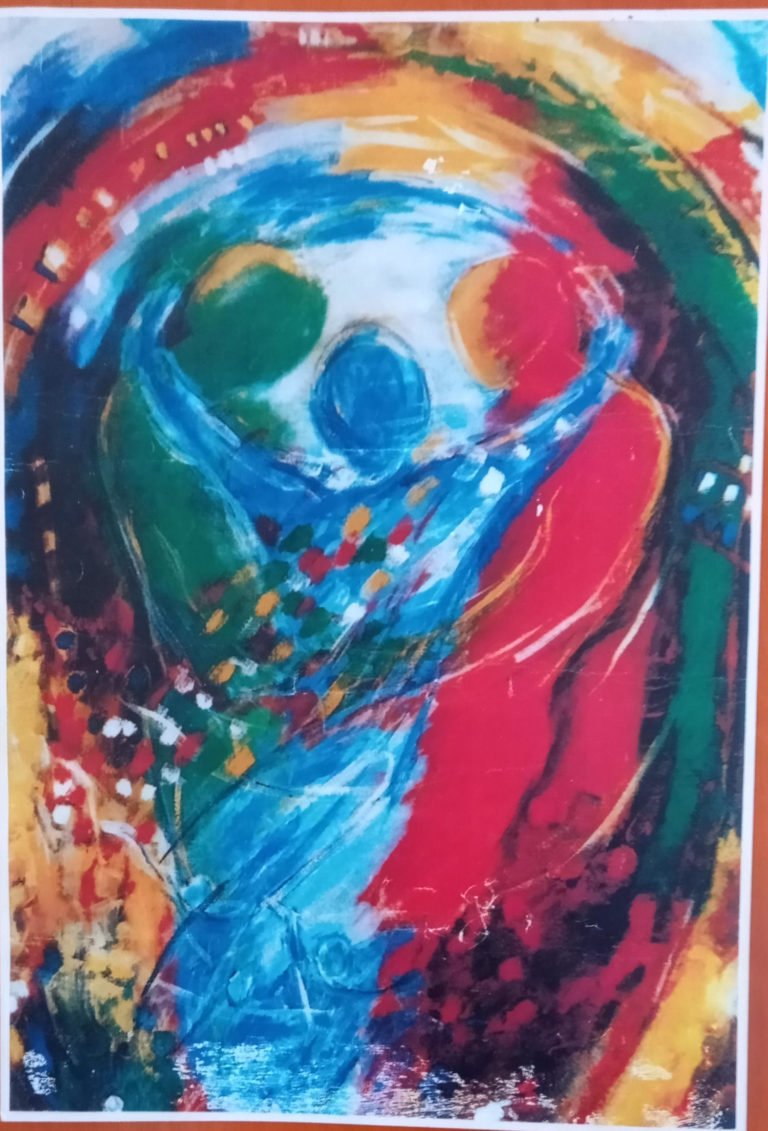Dancing the Holy Trinity with Robin Williams
“Me? What do I do? Just stand here and do nothing?”
“No!” responds Robin Williams's character in the 1996 film The Bird Cage. “You do Fosse, Fosse, Fosse, Martha Graham, Martha Graham. Madonna, Madonna.”
See it here. It’s a laugh.
The Western Christian Church celebrates the Holy Trinity this coming Sunday in the liturgical year cycle. Right about now, many preachers are scratching their heads, attempting to compose a sermon that makes sense of this nonsense. In the words of one Pastor, “I hate preaching on the Trinity.”
Fair enough, but let’s get some perspective on this subject through the lens of an imaginal or symbolic way of viewing the religion of Christ. (By the way, if you are having difficulty reading this because you are distracted by Mr. Williams dancing, you can click on the image. It should pause. Or scroll down until it’s no longer visible.)
First, a few short statements about the Trinity; that way, those of you hoping to get on with work, the laundry, or an outdoor hike, can move on with your life. What follows are a few brief thoughts, then we will dive into a more protracted engagement.
1. If you were alive in the year 25 C.E. (Common Era, formerly known as A.D.), walked up to the most learned person in the ancient world, and brought up the topic of the Trinity, they would have no idea what you were talking about. That’s because it’s a concept that doesn’t really get fully developed for another 300 years. In other words, Rabbi Jesus would not have been lecturing his disciples on the Holy Trinity, though he did have a few words to say about the Holy Spirit, especially in John’s Gospel.
2. Let’s pause a remember that all conceptual understandings of God are just that. They are concepts, imaginings, and aspirational articulations. We are trying to describe something that is beyond description. Yet, we are humans, so we try.
3. I don’t recall which one of my seminary professors summarized the Trinity as, “We are basically saying that God is relational.” That’s it. Done! The idea of Three persons conversing with one another tells us that the divine is not static but active, engaged, and relating with each other and all of us, all of creation. The Holy is alive and humming like the vibrations of atoms.
4. An author once indicated that we conceive of God as a Trinity because of language. We communicate in a three-fold sentence structure in many of the Near East languages. “I love you.” Subject, verb, object. It’s the foundation for thinking and communicating, so why wouldn’t we conceive of God as a threefold expression?
5. Lastly, the great challenge of explaining how something can simultaneously be three distinct persons (Father, Son & Holy Spirit, and simultaneously one substance - God). You can hear the ancient debates in the beer halls on the outskirts of Nicaea, Rome, and Constantinople: “Come on mate, is it one person or is it three persons, make up your mind.” OK, mate being a bit of a British term might not have been said in the ancient world.
6. And finally, here’s the best image and metaphor I’ve come up with to get at the idea of three in one:
Yup, boiling H20 but with a twist. Start with Ice. What is it? It’s solid. Drop some ice cubes in a pot and turn on the heat. Soon that solid melts and turns into water – a liquid. Keep that heat going for a while, and soon that water turns into steam – a gas. Three expressions of the same substance, namely H2O. Now if you have the right equipment (please don’t try this at home) and you can keep that heat going long enough and hot enough, eventually, H20 becomes all three simultaneously. This happens at a ridiculously high temperature; think the surface of the son. I’m sure a scientist out there can verify this lab experiment.
If one of these explanations works for you, then off you go outside for a walk or down to the basement for the laundry.
But wait, there’s more.
What is the theological explanation for the Trinity, and why bother even engaging with the topic? I find the subject fascinating, but you must understand that my approach might differ from yours or others in the church. I’m viewing the Trinity not as a literal, actual, historical fact. No, I’m wrestling with this while putting on my imaginative symbolic 3D glasses. I’m less interested in the factual Trinity and more energized by the symbolic Trinity.
The folks with the most helpful approach to this matter are our friends in the Eastern Orthodox churches. You know, like the Greek Orthodox church down the road from you that serves those excellent souvlaki pita sandwiches yearly at their church fair. The Orthodox have it right. Essentially, they are with Robin Williams. For them, the Holy Trinity is a dance. For the orthodox, describe the Holy Trinity using the term "Perichoresis" which is derived from the Greek peri, "around," and chōreō, "to go, or come." As a compound word, it refers primarily to "going around" or "encompassing." But note that word chōreō that’s a root in our English word choreography, the art of dancing. The Holy Trinity is a dance between the three essences of God. They are dancing around one another.
This is where Rich Rohr, in his book The Divine Dance: The Trinity and Your Transformation, posits the Holy Trinity as a divine dance of mutual and reciprocal love. Though he’s a Franciscan, Rohr is pulling from the wisdom of the Eastern churches. He regards the Trinity as the ultimate relationship model, a circle of outpouring and in-flowing love, challenging the conventional hierarchical view. Rohr’s perspective on the Trinity emphasizes God's relational and dynamic aspects, with God not as a distant monarchical figure but as a divine community inviting us into a relationship.
The Eastern Orthodox Church, with its rich history and theological tradition, offers a unique perspective on Christianity's core doctrine: The Holy Trinity. This doctrine holds that God is one essence existing in three persons: God the Father, God the Son (Jesus Christ), and God the Holy Spirit. The doctrine of the Holy Trinity is rooted in the early centuries of Christianity. During this period, the Church sought to reconcile the teachings of the Bible about the nature of God with the philosophical language of the time. The Ecumenical Councils shaped Eastern Orthodox theology, particularly the First Council of Nicaea in 325 CE and the First Council of Constantinople in 381 CE, affirming the divinity of Jesus and the Holy Spirit. These councils form the foundation for the Nicene Creed.
There are challenges in Eastern Orthodox theology. For one, it emphasizes the monarchy of the Father, understanding “Him” as the source and cause of the Son and the Spirit. However, this understanding does not degrade the Son and the Spirit to lesser deities but speaks of their eternal origin. In addition, as many feminist theologians have pointed out, the language of the “Father” has perpetuated a view of God as a male figure reinforcing a patriarchal worldview. Some people have substituted the actions of the Trinity using the phrase Creator, Redeemer, and Sanctifier. I prefer to reference the Holy Spirit with the pronoun “she.” Cynthia Bourgeault takes a different approach from labeling the Holy Spirit as feminine. Instead, Bourgeault sees the Trinity as the process by which God moves from one state to another. This process continues a pattern that maintains a dynamism that results in a new dimension. That leads to a fuller engagement with God on the part of people like you and me.
The Trinity has other aspects, but I suspect I’ve burdened you enough today.
Here’s another image that I’m rather fond of viewing.
Implications for Spiritual Life
So, what’s the big deal, and how, or does this make a difference in the Everyday Spirituality of your and my life? I think of three (how fitting) ways this makes a difference.
1. Wrestling with God as a Holy Trinity models human relationships, illustrating an ideal of loving communion without loss of personal distinctiveness.
2. Unlike the static, far-removed deity portrayed in some imagery, the Trinity suggests a dynamic, alive, and vibrant God.
3. Finally, the divine energies are central to our understanding of theosis, the process by which humans become partakers of the divine nature. More on this topic in the future.
James Hazelwood, author, bishop, and spiritual companion, is the author of Weird Wisdom for the Second Half of Life and Everyday Spirituality: Discover a Life of Hope, Peace, and Meaning. This essay first appeared as a part of my substack newsletter found here.
A Contemporary Image of the Trinity


